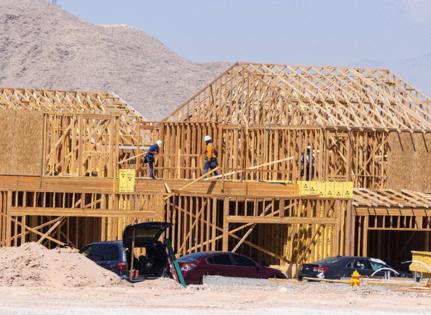Homebuilders are fighting green building. Homeowners will pay
Published in Home and Consumer News
Back in the 1990s, political guru James Carville said he wanted to be reincarnated as the bond market because it could “intimidate everybody.” Here in the 2020s, you might prefer to come back as a homebuilder. The industry has the political muscle to protect its profits at the expense of both homeowners and the climate.
In some fast-growing parts of the U.S., lobbyists are frustrating efforts to make new homes more efficient and compatible with clean technology, making it that much harder for the rest of us to avoid the worst effects of a heating planet. They’re doing it in the name of housing affordability, naturally — but it doesn’t hurt that they’re keeping a lid on homebuilders’ costs at the same time. Their sabotage will cost homeowners much more in the long run.
In 2021, the International Code Council, a nonprofit group that every few years suggests building codes for the whole country, released an aggressive set of proposals that could reduce residential carbon emissions and annual energy costs by 9%, according to one estimate. This was in response to a groundswell of requests from local officials to update standards that had long been stagnant.
Housing’s carbon emissions account for 19% of the U.S. total. Making homes more efficient is crucial to zeroing out emissions by 2050 and limiting long-term global warming to 2 degrees Celsius above preindustrial averages. The cherry on this sundae is that efficient houses put money in their owners’ pockets in the form of lower utility bills and renovation costs. Unlike wind farms or carbon taxes, this is a green fix that should have broad public support.
Homebuilders apparently hate it.
As the Washington Post recounted last week, the National Association of Home Builders and other lobbyists first attacked and watered down the ICC proposals, including nixing changes that would have made it easier to install electric-vehicle chargers in homes. Then they tried to blow up the ICC code-writing process, making it impossible for local officials to vote on them.
Then they pushed state legislatures to reject the new building codes, sometimes successfully. Tapping popular anger about housing costs, they argue the new standards would raise construction expenses by $20,000 per house, making them less affordable for working-class people.
The pitch worked in North Carolina. Its Republican-controlled legislature not only rejected the ICC’s codes but made it impossible to adopt any new codes until 2031. North Carolina Home Builders Association lobbyists actually helped write the law, North Carolina Public Radio reported. For good measure, the bill also blocked a requirement that new homes be inspected for their ability to withstand hurricane-force winds.
The homebuilders’ cost argument is deeply flawed in at least two ways. For one thing, that $20,000 figure comes from an NAHB survey of just eight homebuilders, according to NCPR. It appears to be a wild exaggeration. A federal study found the new standards would actually raise building expenses by $4,700 to $6,500 for a single-family home. Lower energy bills mean homeowners would recoup their upfront costs in just a few years. And hiring a contractor to upgrade efficiency later would cost many multiples of that.
“The best time to make a better building is before it’s built,” said Denise Grab, principal expert on the carbon-free buildings team at the nonprofit Rocky Mountain Institute.
...continued
©2024 Bloomberg L.P. Visit bloomberg.com/opinion. Distributed by Tribune Content Agency, LLC.







Comments